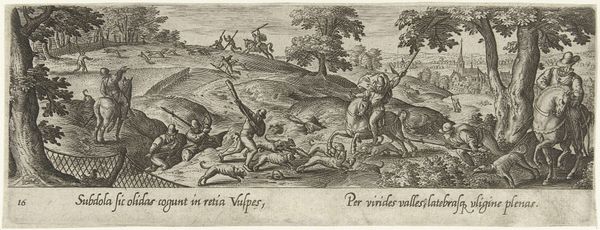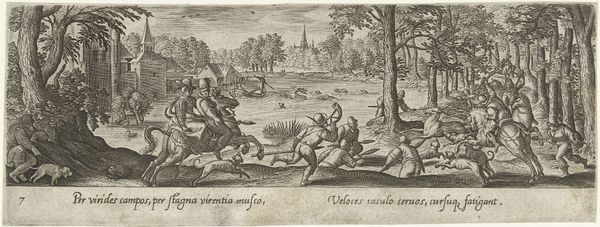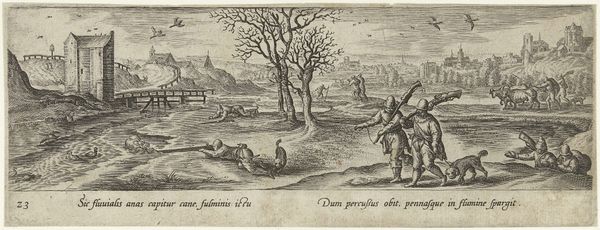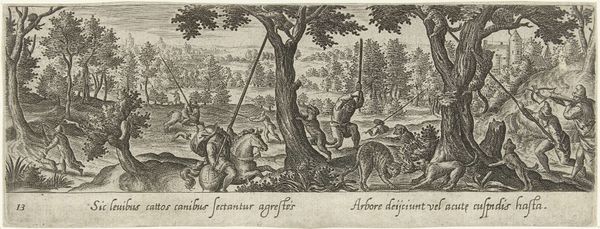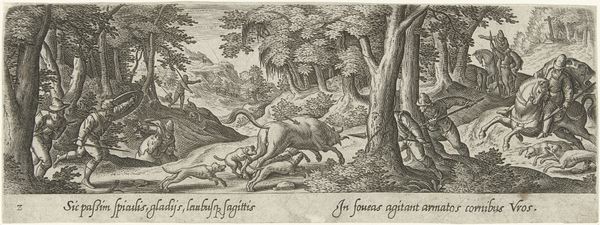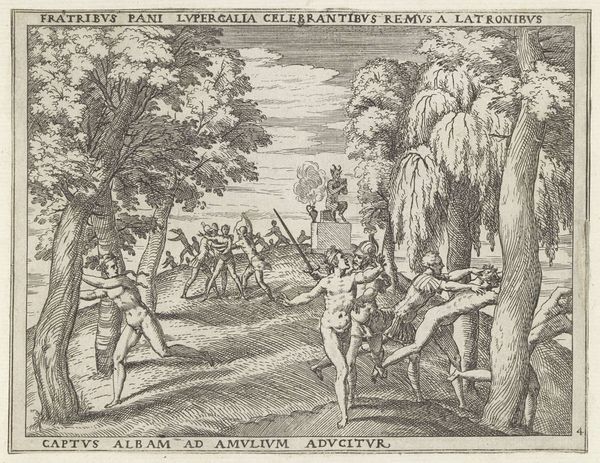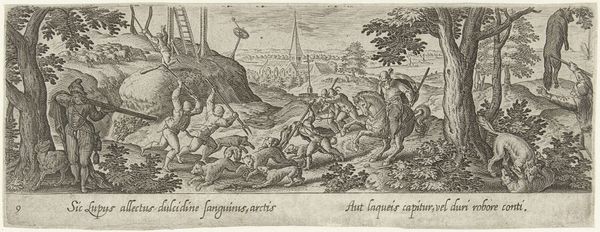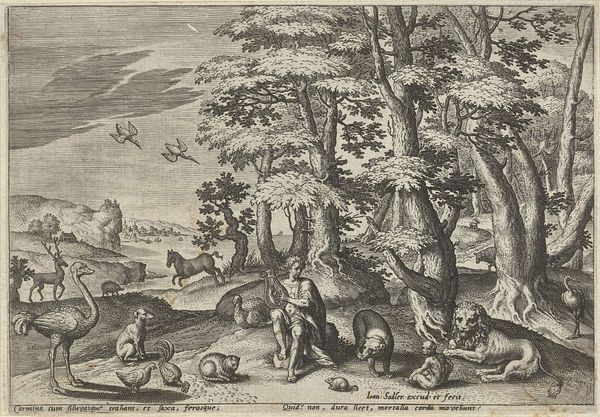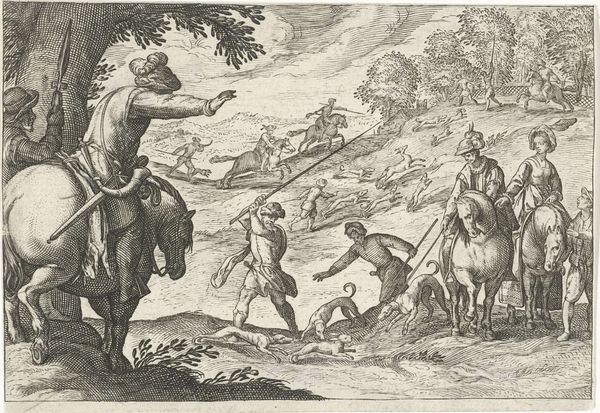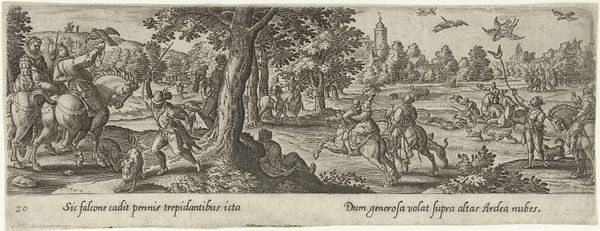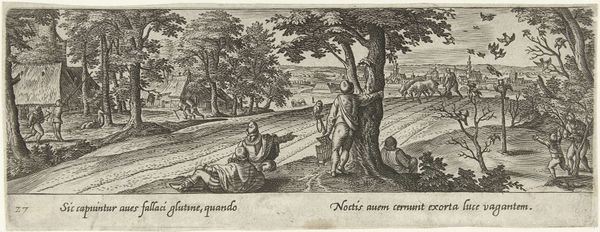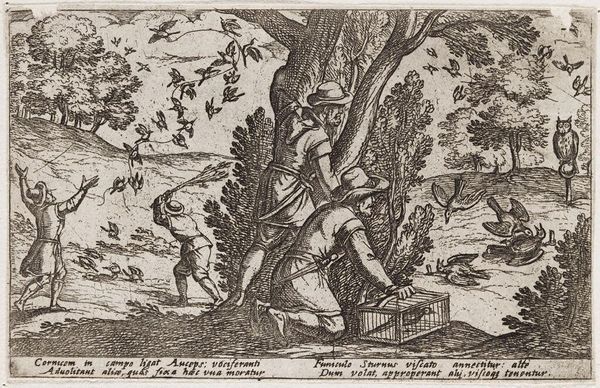
print, engraving
# print
#
landscape
#
genre-painting
#
northern-renaissance
#
engraving
Dimensions: height 81 mm, width 215 mm
Copyright: Rijks Museum: Open Domain
Curator: This print, attributed to Philips Galle, is titled "Jacht op de houtsnip," which translates to "Hunting the Woodcock." It's an engraving housed here at the Rijksmuseum, dating from 1582 to 1633. My first impression is one of deceptive tranquility. What do you think? Editor: Well, the delicate hatching creates a sense of idyllic countryside. But, there is this large net with birds heading right for it, almost a warning. I see a web of hidden meanings, the act of hunting taking on symbolic weight beyond a simple genre scene. Curator: Yes, and consider the laborious process. This is an engraving, meaning Galle painstakingly cut lines into a metal plate. Each blade of grass, each feather, is the result of focused work. It speaks to the value placed on artisanal skill, but also to the sheer physical exertion needed to produce art and sustain a living. We see those who are setting the net. Editor: That act of trapping extends metaphorically. Those nets remind me of snares—not just for the birds, but perhaps also for us viewers, drawing us into the scene and contemplating the subtle morality play unfolding here. Curator: Precisely. And beyond the immediate visual plane, notice the agrarian backdrop. Galle integrates scenes of cultivation with images of harvest to enhance its composition and its meaning. Editor: Absolutely. The background reinforces the continuous cycle of nature—planting, growing, harvesting, and even preying. This engraving highlights the symbiosis of man with landscape but I also detect social hierarchy through how individuals perform this exploitation of their environment. Curator: Note also the positioning of the figures. Each element – from the hunters to the woodcock themselves, from the farmland to the domestic animals that populate the far horizons, represents stages within both social and productive labor. This allows an investigation into social themes. Editor: The choice of medium further illuminates social standing of image creation; the printing would've been widely distributed—suggesting broader social commentary. Curator: Seeing your reaction truly reveals how everyday activities become emblematic! Editor: And for you, it displays the production methods employed by its maker, drawing our focus toward those traditionally pushed to the margins of history. Thanks to our divergent insights we can offer a richer analysis!
Comments
No comments
Be the first to comment and join the conversation on the ultimate creative platform.
